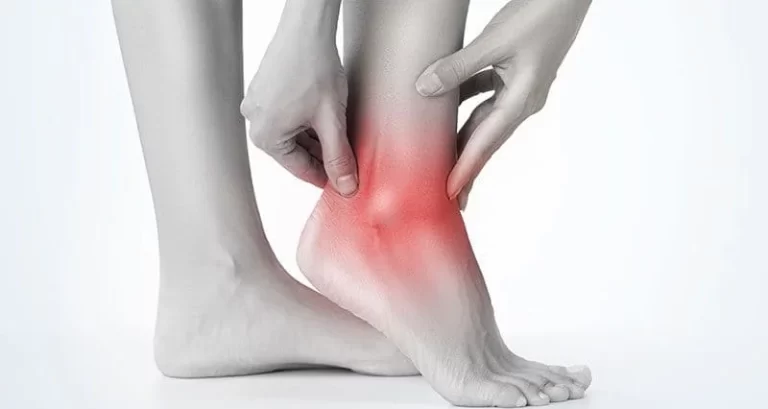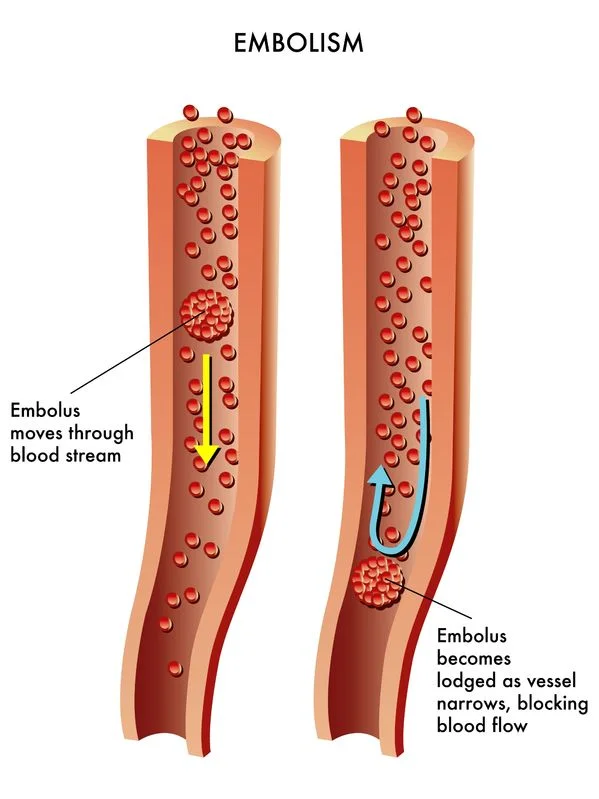What Is The Difference Between Bone Pain and Muscle Pain?
Bone pain and muscle pain are two distinct types of pain that can occur in different parts of the body. They may have similar symptoms, but there are several key differences that can help differentiate between the two.
Bone pain is felt in the bones or joints and is often described as a dull, aching sensation. This type of pain can be caused by various conditions such as injury, osteoporosis, arthritis, or cancer. Injuries, such as fractures or broken bones, can cause sharp pain and swelling, making it difficult to move the affected limb. Osteoporosis is a condition that weakens the bones, making them more prone to fractures and other injuries. Arthritis is an inflammation of the joints that causes pain, stiffness, and difficulty moving. Cancer can also cause bone pain as tumors can form in the bones and put pressure on surrounding tissues.
Muscle pain, on the other hand, is felt in the muscles or soft tissues and is often described as an aching or sore sensation. This type of pain can range from mild to severe and can be caused by injury, overuse, disease, or underlying medical conditions. Injuries, such as strains or sprains, can cause localized pain and difficulty moving the affected muscle. Overuse, such as repetitive motions, can cause microscopic tears in the muscle fibers, leading to pain and weakness. Diseases, such as fibromyalgia or polymyalgia rheumatica, can cause widespread muscle pain and weakness. Infections, such as the flu, can also cause muscle pain as they can cause inflammation in the muscles.
What is Bone Pain?
Bone pain is a type of discomfort or soreness that is experienced in one or more bones of the body. This pain can range from mild to severe and can be either acute (short-lived) or chronic (long-lasting). Bone pain can be caused by a variety of factors, including injury, disease, or degenerative conditions.
One common cause of bone pain is injury. Injury leads to fracture of Bone, sprain of ligament, or strain of muscles. Fractures can occur when a bone is subjected to excessive force, such as during a fall or car accident. Sprains and strains can occur when ligaments and muscles that support a joint are overstretched or torn. In these cases, the pain is usually localized to the area of the injury and may be accompanied by swelling, bruising, and difficulty moving the affected limb.
Another common cause of bone pain is a disease. Diseases such as osteoporosis, osteoarthritis, and rheumatoid arthritis can all lead to pain in the bones. Osteoporosis is a condition in which the bones become weaker and more likely to fracture. Osteoarthritis is a condition in which the cartilage which is located between joints that cushions the joints wears away, leading to Joint pain with stiffness. Rheumatoid arthritis is a chronic autoimmune disorder that causes inflammation in the joints, leading to pain, swelling, and stiffness.
Infections, such as osteomyelitis, can also cause bone pain. Osteomyelitis is an infection of the bone that can be caused by bacteria or fungi. This infection can cause redness, swelling, and tenderness in the affected area, as well as fever and fatigue.
Bone tumors, both benign and malignant, can also cause bone pain. Benign bone tumors do not spread to other parts of the body but can cause pain as they grow and press on surrounding tissues. Malignant bone tumors, on the other hand, can spread to other parts of the body and cause pain as they invade and destroy surrounding tissues.
Bone pain can also be caused by other factors, such as hormonal imbalances, nutrient deficiencies, and certain medications. For example, women who are going through menopause may experience bone pain due to a decrease in estrogen levels, which can lead to bone loss. Nutrient deficiencies, such as a lack of calcium or vitamin D, can also lead to weak bones and pain. Certain medications, such as glucocorticoids, can weaken bones and cause pain as well.
Bone pain can be caused by a variety of factors, including injury, disease, and other underlying medical conditions. If you are experiencing bone pain, it is important to see a doctor for a proper diagnosis and treatment plan. Treatment options may include medication, physical therapy, lifestyle changes, and, in some cases, surgery. By identifying the cause of your bone pain and seeking appropriate treatment, you can help manage your pain and improve your quality of life.
What is Muscle Pain?
Muscle pain, also known as myalgia, is a common condition that results from discomfort, soreness, or aching in the muscles. This type of pain can range from mild to severe and can last from a few days to several weeks. Muscle pain can be caused by a variety of factors, including injury, disease, overuse, or underlying medical conditions.
One common cause of muscle pain is injury. This can occur from overexertion, such as during physical activity, or from a direct injury, such as a strain or sprain. In these cases, the pain is usually localized to the area of the injury and may be accompanied by swelling, bruising, and difficulty moving the affected muscle.
Another common cause of muscle pain is overuse. This can occur when a muscle is used repetitively, leading to microscopic tears in the muscle fibers. Over time, these tears can cause pain, swelling, and weakness in the affected muscle. This type of muscle pain is often seen in individuals who engage in repetitive motions, such as typing or playing musical instruments.
Muscle pain can also be caused by disease. Diseases such as fibromyalgia, polymyalgia rheumatica, and dermatomyositis can all lead to muscle pain. Fibromyalgia is a chronic condition that causes widespread muscle pain, fatigue, and tenderness in specific areas of the body. Polymyalgia rheumatica is an inflammatory condition that affects the muscles and joints and can cause pain, stiffness, and weakness in the muscles.
Infections, such as the flu or a viral illness, can also cause muscle pain. These infections can cause inflammation in the muscles, leading to pain and weakness. Additionally, some medications, such as statins, can cause muscle pain as a side effect.
Nutrient deficiencies, such as a lack of calcium or vitamin D, can also lead to muscle pain. These deficiencies can cause the muscles to become weak and prone to injury, leading to pain. Additionally, hormonal imbalances, such as low testosterone or thyroid dysfunction, can cause muscle pain and weakness.
Muscle pain can be caused by a variety of factors, including injury, overuse, disease, and underlying medical conditions. If you are experiencing muscle pain, it is important to see a doctor for a proper diagnosis and treatment plan. Treatment options may include medication, physical therapy, lifestyle changes, and, in some cases, surgery. By identifying the cause of your muscle pain and seeking appropriate treatment, you can help manage your pain and improve your quality of life.
What is the difference between bone pain and muscle pain?
Bone pain and muscle pain are two different types of pain that can occur in different parts of the body. While they may have similar symptoms, there are several key differences between bone pain and muscle pain that can help differentiate between the two. Understanding these differences is important for the proper diagnosis and treatment of the underlying condition.
Bone pain is a type of pain that is felt in the bones or joints. This type of pain is often described as a dull, aching sensation and can be felt in a specific area of the body or spread throughout the bones. Bone pain can be caused by a variety of conditions, including injury, osteoporosis, arthritis, and cancer. Injuries, such as fractures or broken bones, can cause intense, sharp pain that may be accompanied by swelling and difficulty moving the affected limb. Osteoporosis is a condition that results in the loss of bone density, making bones more prone to fractures and other injuries. Arthritis is a condition that causes inflammation in the joints, leading to pain, stiffness, and difficulty moving. Cancer can also cause bone pain, as tumors can form in the bones and put pressure on surrounding tissues.
Muscle pain, on the other hand, is a type of pain that is felt in the muscles or soft tissues. This type of pain can range from mild to severe and is often described as aching or soreness in the affected area. Muscle pain can be caused by a variety of factors, including injury, overuse, disease, and underlying medical conditions. Injuries, such as strains or sprains, can cause localized pain and difficulty moving the affected muscle. Overuse, such as from repetitive motions, can cause microscopic tears in the muscle fibers, leading to pain and weakness. Diseases, such as fibromyalgia or polymyalgia rheumatica, can cause widespread muscle pain and weakness. Infections, such as the flu or a viral illness, can also cause muscle pain, as they can cause inflammation in the muscles.
In terms of location, bone pain is typically felt in the bones or joints, while muscle pain is felt in the muscles or soft tissues. Bone pain may be accompanied by swelling and difficulty moving the affected limb. While muscle pain may be accompanied by tenderness or weakness in the affected area. Additionally, bone pain may be accompanied by a cracking or popping sound. While muscle pain is usually not accompanied by any sounds.
The treatment for bone pain and muscle pain will depend on the underlying cause. For injuries, such as fractures or broken bones, immobilization, such as a cast or brace, may be necessary to allow the bone to heal properly. Medications, such as pain relievers or anti-inflammatory drugs, can also be used to manage pain. Physical therapy and exercises can also be helpful for managing pain and restoring movement. For conditions such as osteoporosis or arthritis, treatments may include medications, lifestyle changes, and physical therapy to manage pain and improve joint function. For muscle pain, treatment may include rest, physical therapy, and medications, such as pain relievers or muscle relaxants.
In conclusion, bone pain and muscle pain are two different types of pain that can occur in different parts of the body. Understanding the differences between the two is important for the proper diagnosis and treatment of the underlying condition. Bone pain is typically felt in the bones or joints and is often accompanied by swelling and difficulty moving the affected limb. Muscle pain is typically felt in the muscles or soft tissues. May be accompanied by tenderness or weakness in the affected area. Treatment for both types of pain will depend on the underlying cause and may include medications, physical therapy, and lifestyle changes.







